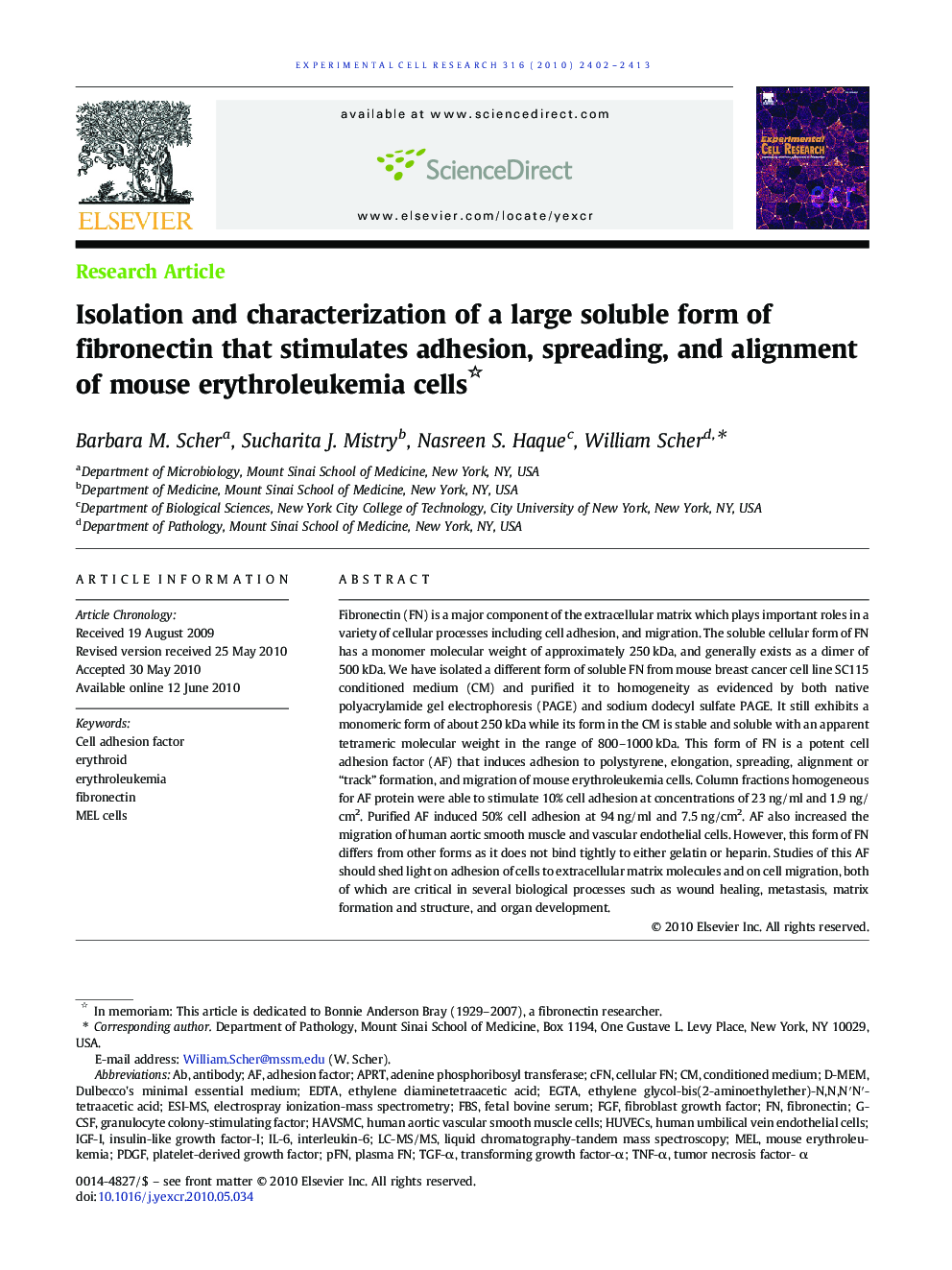| Article ID | Journal | Published Year | Pages | File Type |
|---|---|---|---|---|
| 2130858 | Experimental Cell Research | 2010 | 12 Pages |
Fibronectin (FN) is a major component of the extracellular matrix which plays important roles in a variety of cellular processes including cell adhesion, and migration. The soluble cellular form of FN has a monomer molecular weight of approximately 250 kDa, and generally exists as a dimer of 500 kDa. We have isolated a different form of soluble FN from mouse breast cancer cell line SC115 conditioned medium (CM) and purified it to homogeneity as evidenced by both native polyacrylamide gel electrophoresis (PAGE) and sodium dodecyl sulfate PAGE. It still exhibits a monomeric form of about 250 kDa while its form in the CM is stable and soluble with an apparent tetrameric molecular weight in the range of 800–1000 kDa. This form of FN is a potent cell adhesion factor (AF) that induces adhesion to polystyrene, elongation, spreading, alignment or “track” formation, and migration of mouse erythroleukemia cells. Column fractions homogeneous for AF protein were able to stimulate 10% cell adhesion at concentrations of 23 ng/ml and 1.9 ng/cm2. Purified AF induced 50% cell adhesion at 94 ng/ml and 7.5 ng/cm2. AF also increased the migration of human aortic smooth muscle and vascular endothelial cells. However, this form of FN differs from other forms as it does not bind tightly to either gelatin or heparin. Studies of this AF should shed light on adhesion of cells to extracellular matrix molecules and on cell migration, both of which are critical in several biological processes such as wound healing, metastasis, matrix formation and structure, and organ development.
